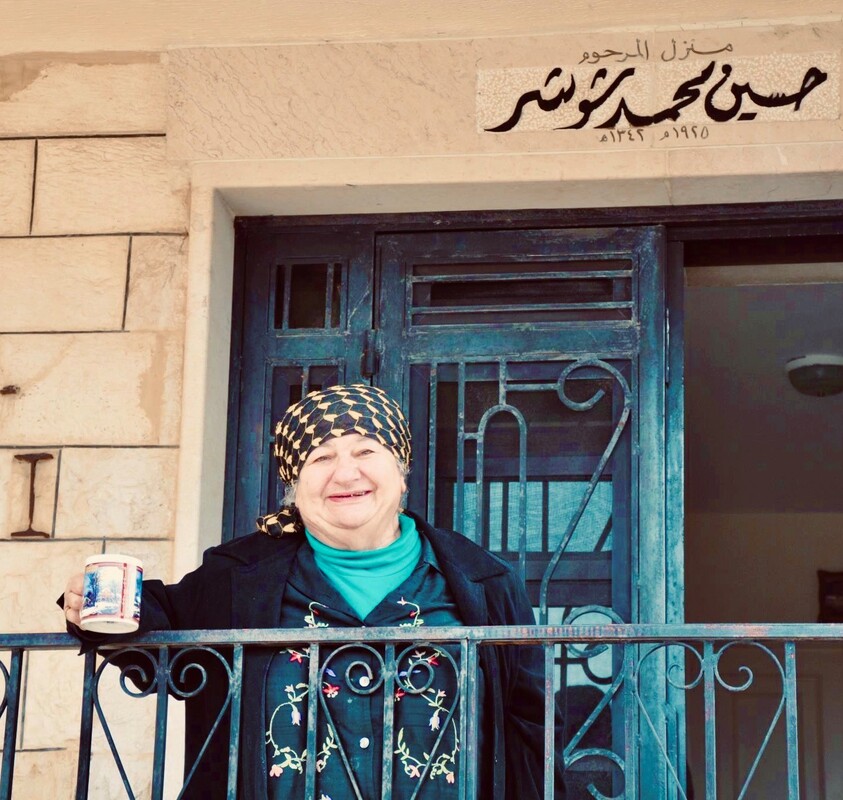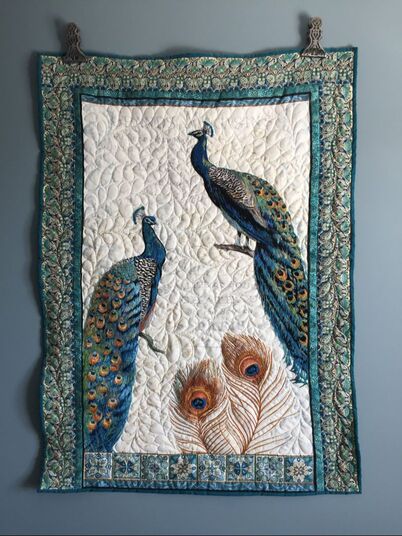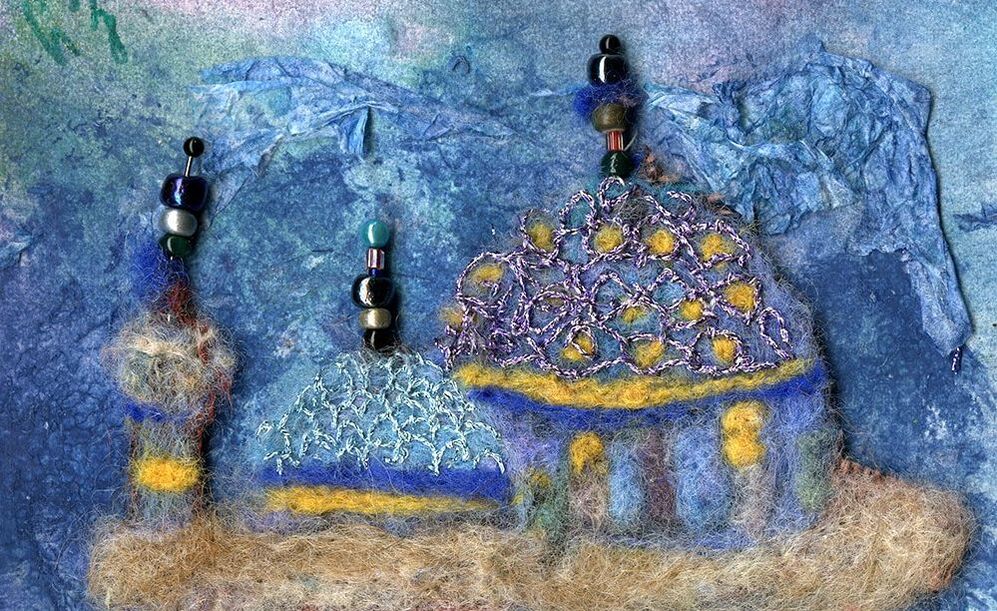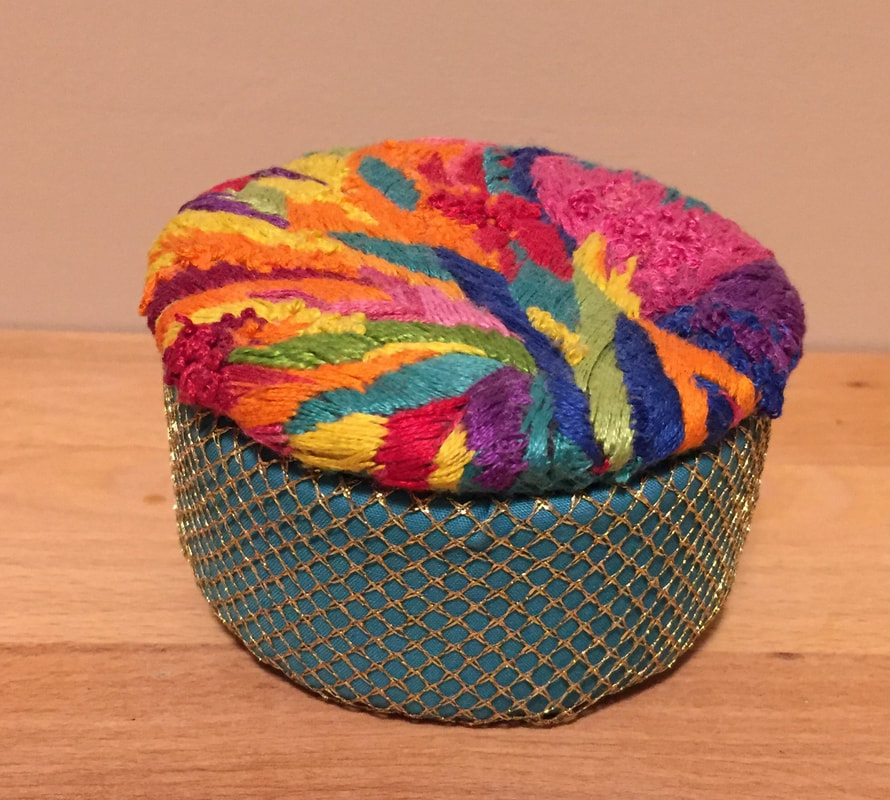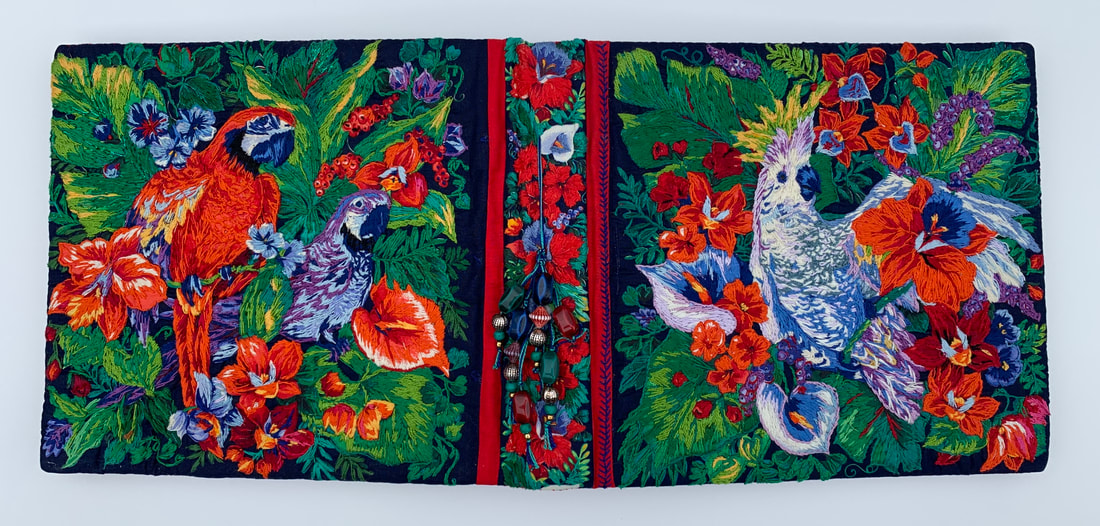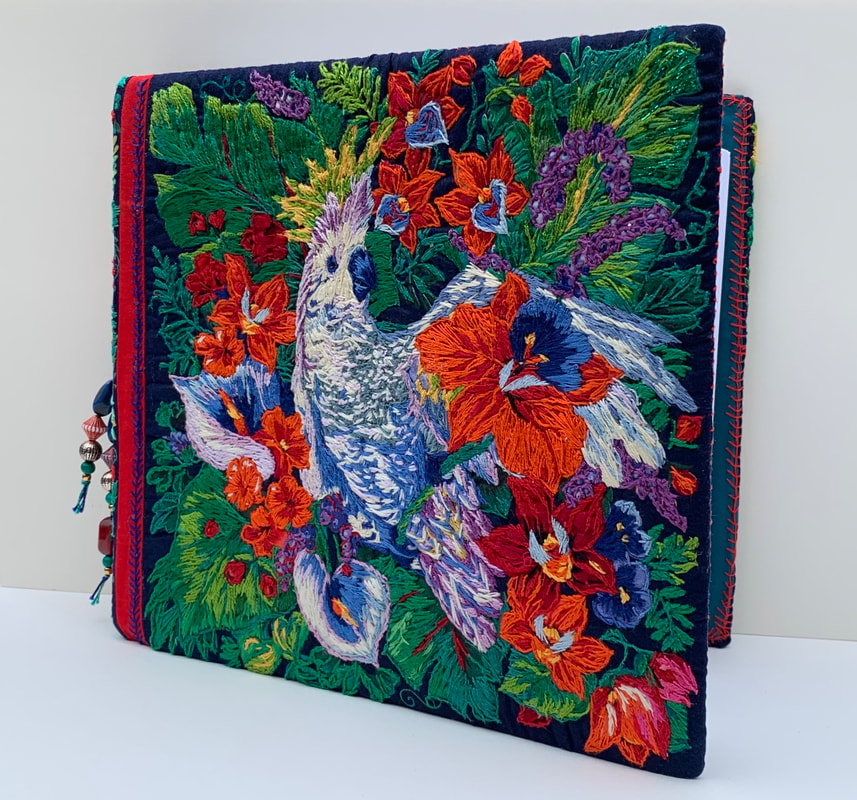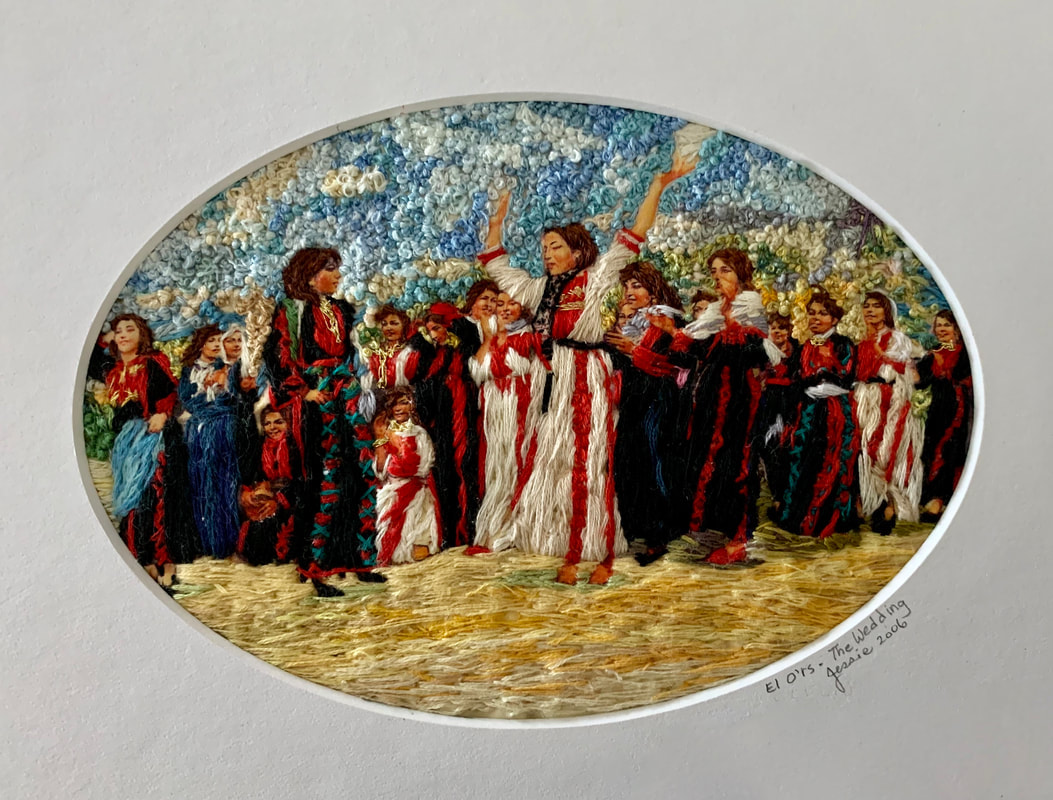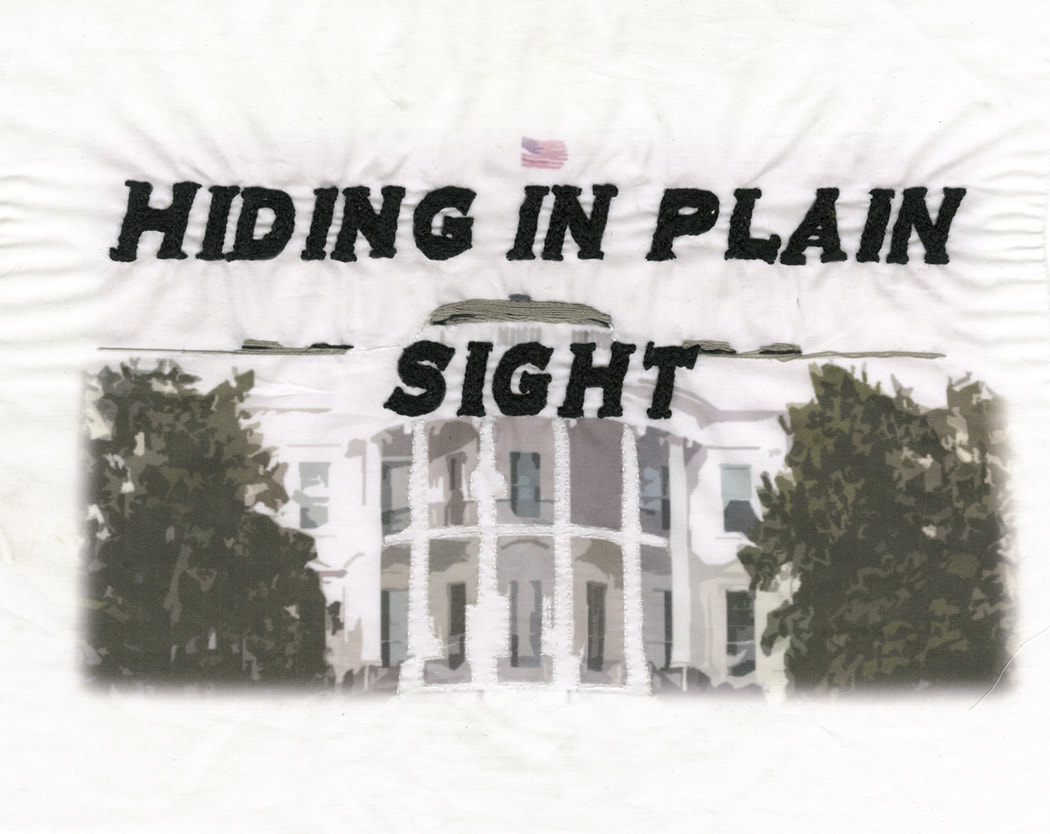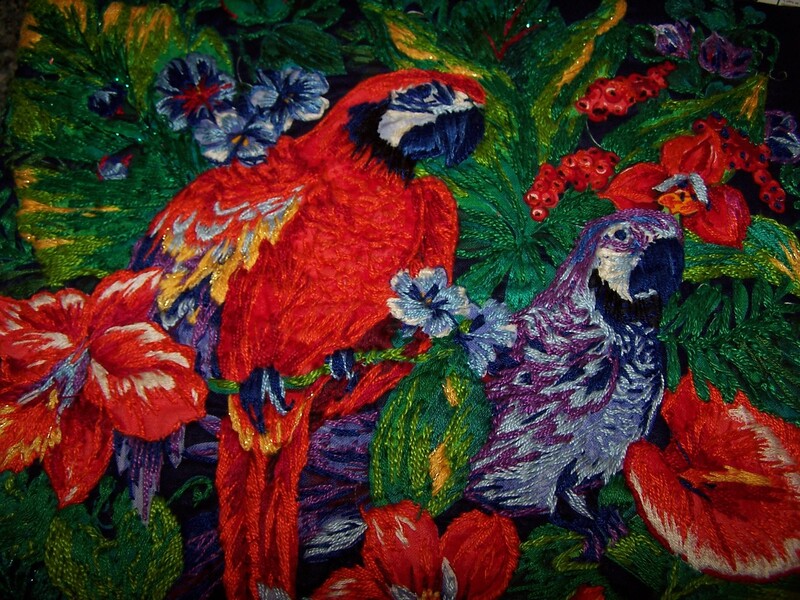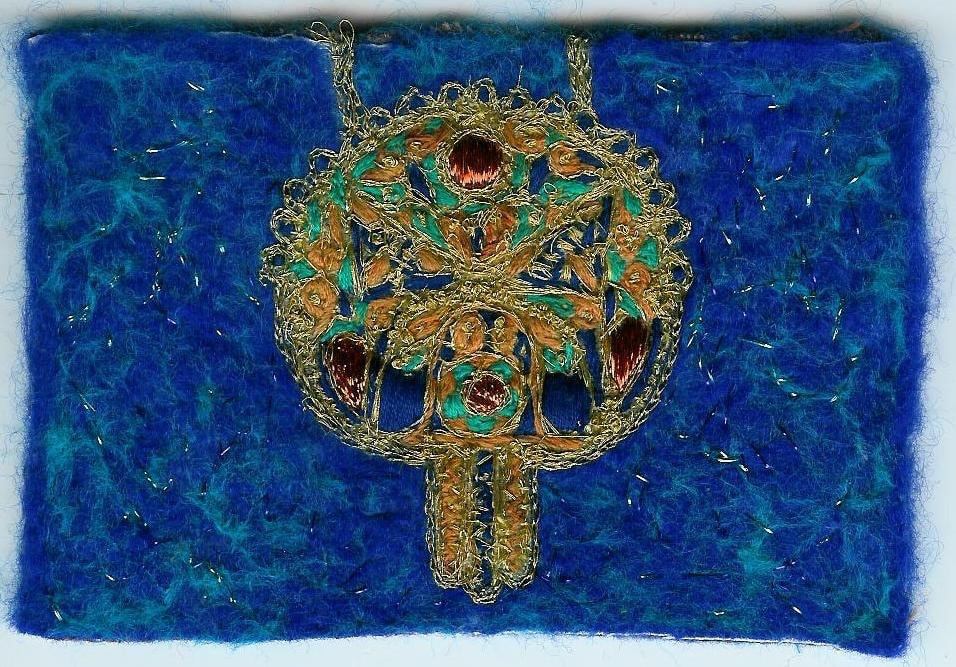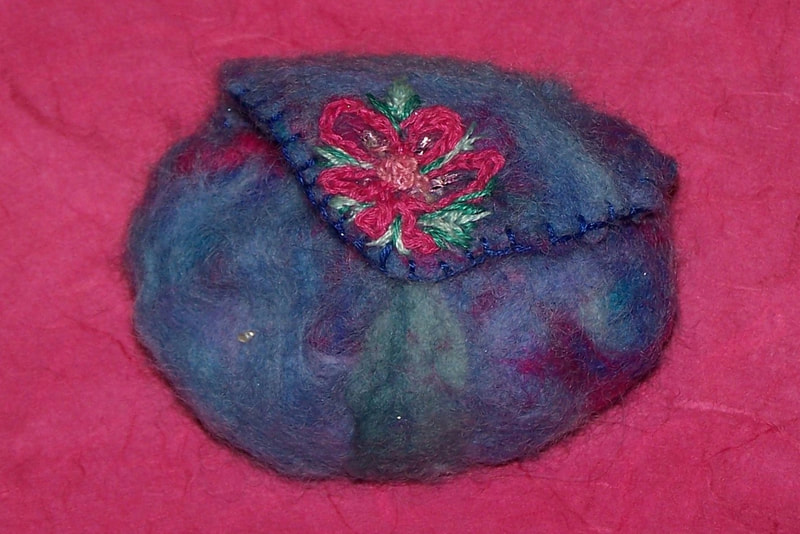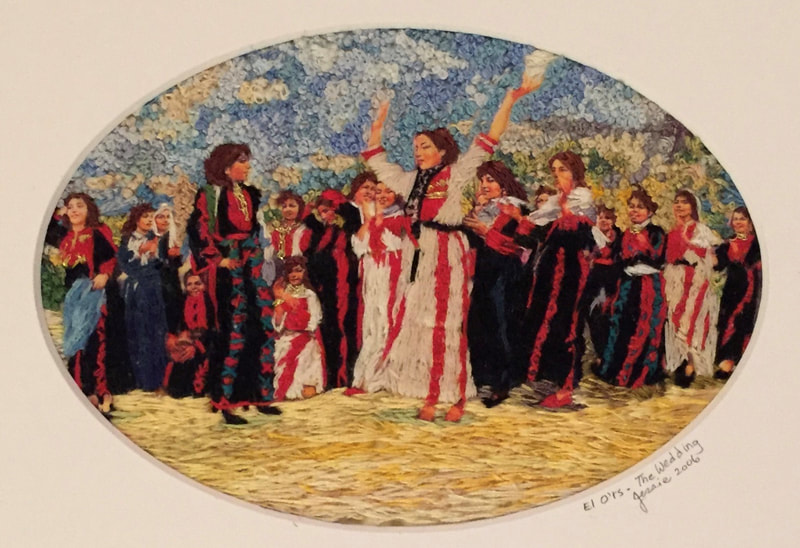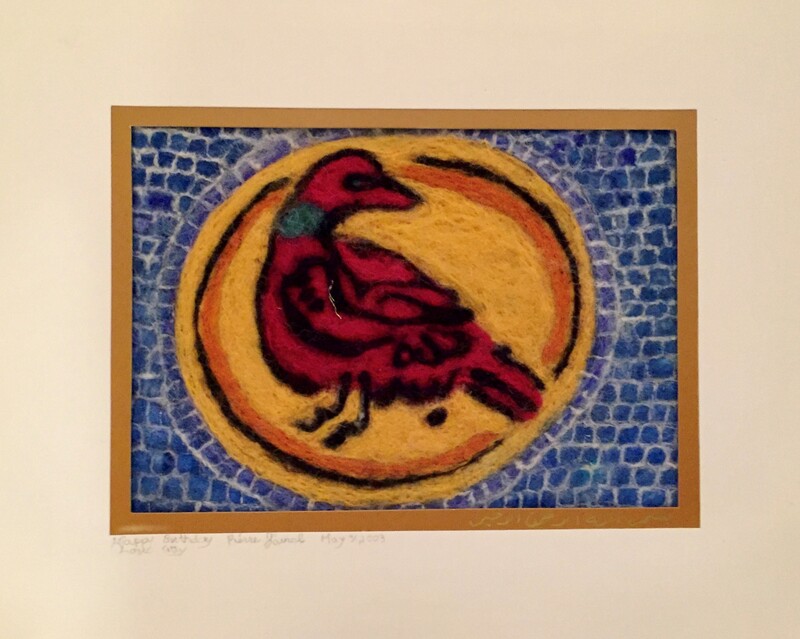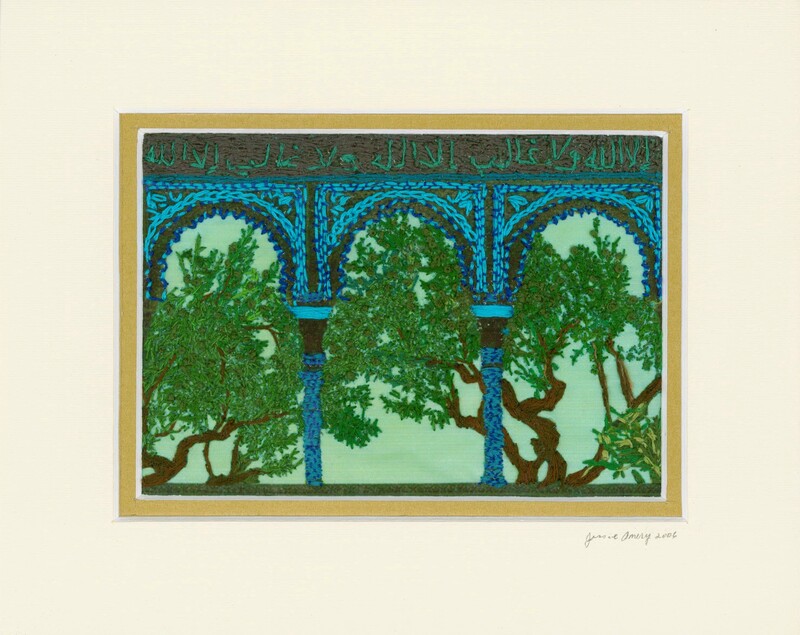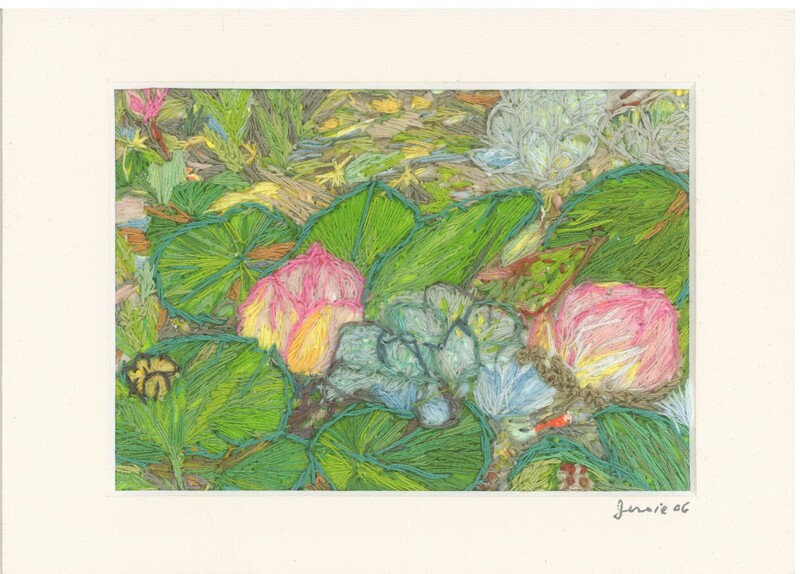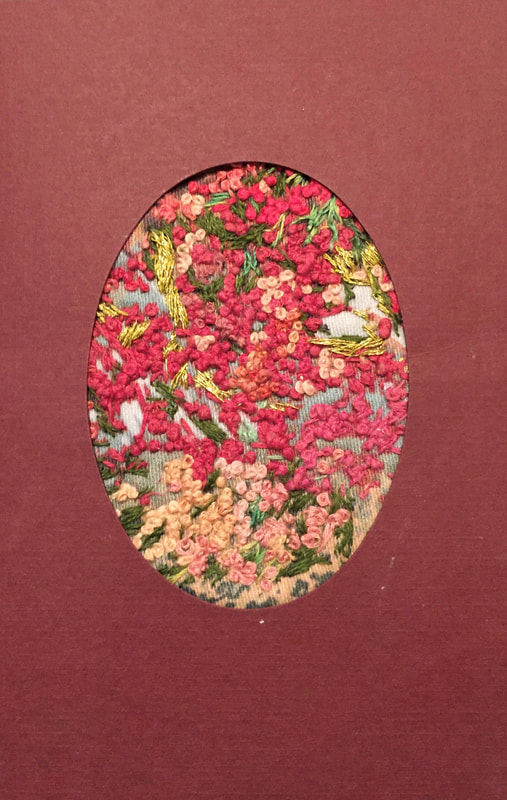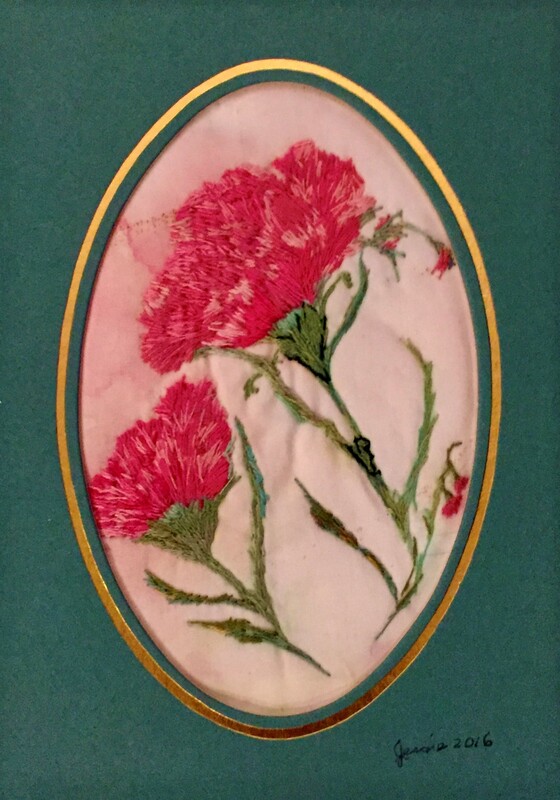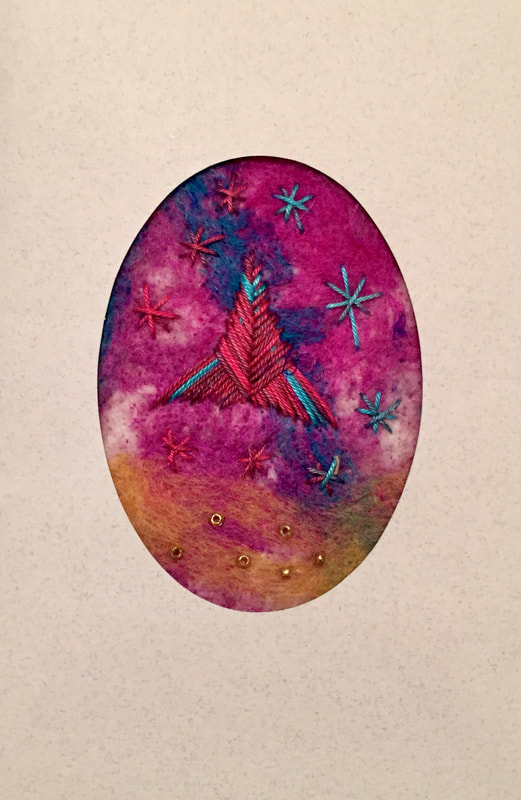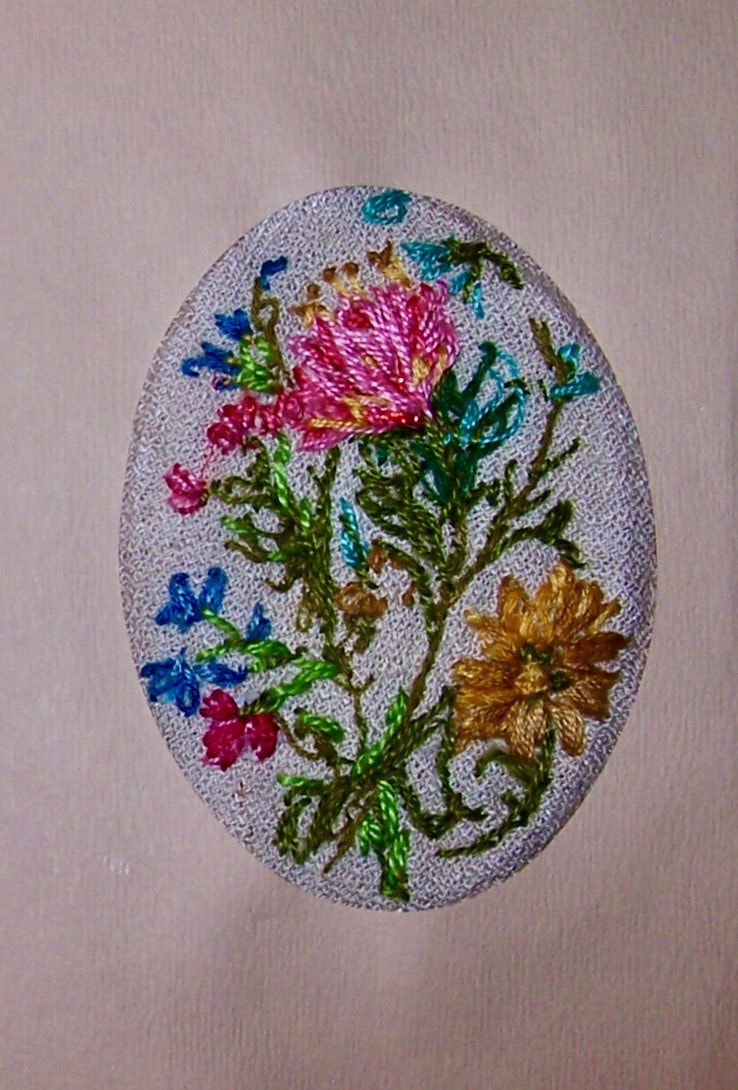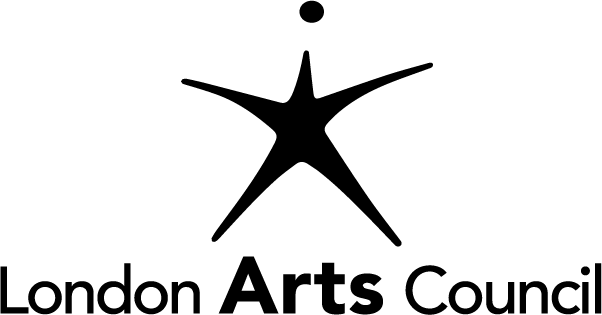JESSIE AMERY
|
|
Jessie Amery was born in London, Ontario. With the exception of a decade in Calgary, she has lived most of her life in London, interspersed with periods of time in the Middle East. Her ties to the Embassy Hotel began during her early childhood years, when she resided with her parents and three other siblings in the second-floor apartment of the Sunnyside Hotel, founded by her father in 1936. The Sunnyside’s name was changed to the Embassy Hotel in 1957, but by then her family had relocated to a home in south London. Jessie grew up as part of a large household where sharing the rich heritage of storytelling, song, music, and literature was part of everyday life. Her life experiences and exposure to other cultures are reflected in her textile art. Needlework has been a part of her life for over sixty years, starting with sewing and knitting for practical reasons and, after raising her children, for the pleasure of creating.
A Western University graduate in anthropology, Jessie’s belief that art has the power to convey a culture’s hopes and dreams, while allowing individuals to express their own realities to others, was foundational in the 1991 international project Travelling Theory co-organized with the McIntosh Gallery and the Jordan National Gallery of Fine Arts, Amman, Jordan. With her sister Jamelie Hassan and co-curator Fern Bayer, Jessie coordinated the community outreach of this multidisciplinary project which presented Arabic arts and culture throughout various locations in the city of London. An active member of the Canadian Embroiderers’ Guild of London since 1996, Jessie uses embroidery as a form of storytelling, incorporating both traditional stitching and contemporary elements. Her textile art grew to include forays into quilting, crochet, basket making, and a number of other textile-based works where repurposing and recycling found objects are incorporated. Each piece she creates is symbolic: whether it is to celebrate a birthday or to be presented in an art exhibit, her first thought is “Who shall I gift this to?” and from there the creativity flows. A gift to her sister was an embroidered reproduction of Jamelie’s 1991 billboard entitled Because... there was and there wasn’t a city of Baghdad, incorporating a newfound skill of needle felting and using the construction material “tyvek,” heated to form part of the dome. A firm believer that art can be a powerful form of social commentary and a force for social change, Jessie finds her inspiration in texts, current events, and in thematic art exhibits. In 2006, Jessie participated in the fundraiser for War Child Canada in an exhibition titled Art Against War at the Cube Gallery in Ottawa. In that same year, she and artist Jean Spence partnered for the In Good Company group exhibit at the McIntosh Gallery in London. Her interest in Palestinian stitchery as a cultural identifier led her to coordinate a Palestinian Stitching workshop in 2007. Late that year, as part of the funding provided through the City of London’s Creative City project, Jessie’s vision of Creative Mosaics: Multicultural Textile Connections was realized. It consisted of four quilted wall hangings made from 109 quilted blocks contributed by immigrant students, teachers, and members of the Canadian Embroiderers’ Guild in London. Most recently, in 2017 and 2018, Jessie made presentations of her Middle East material art collection and shared how they have impacted her own work. In these presentations to members of the Embroiderers’ Guild and the Visual Arts Studio class at Western University, she shared how this material and her travels have shaped her work in art, education, and culture. In 2018, her embroidered textile, replicating a fine art print of Islamic art tiles, was exhibited at Fanshawe College in the Pin It Canada Trade Show for the creative arts industry, followed by the Western Fair and then on to the Needlework Network Conference in Toronto. Over the years, Jessie has supported many social justice causes. This work has included her position as the first Director of Woman Immigrants of London (WIL), a non-profit community organization dedicated to facilitating the social integration needs of immigrant women, and as a volunteer, teaching sewing and quilting skills to women in the Limberlost Social Housing community. Her respect for diversity and inclusivity has helped her to foster partnerships within the community, supporting new immigrants and those interested in textile arts, introducing them to the Embroiderers’ Guild. Jessie Amery’s artwork is predominantly gifted to mark a special event, or in gratitude for acts of kindness and thoughtfulness. |
Earth Day 2021: Stop Extinction! Restore the Earth
Jessie Amery, Pandemonium: Let’s Give Them Something to Squawk About, 2000 |
International Women's Day 2021: Go; Rise and Strike
This piece was inspired by a 1980 photograph taken by Abd Al Aal Hassan, Heba Enayat Palestinian Heritage House, depicting women dancing at a Palestinian wedding. The photograph was converted to a textile art image using French knots, satin stitch, cross stitch and stem stitch. Traditional tatreez (Palestinian embroidery) patterns on the wedding dresses were representative of ancestry, heritage and family or village affiliations. Motifs passed down from mother to daughter, the patterns and colours used to tell a story. Women tended to wear the dresses that were passed down through their families. |
US Elections 2020: Hiding in Plain Sight
I think stitching is a form of story-telling. Each time I look at different forms of needlework, I am reminded of something from my past and, at the same time, I am inspired to experiment in learning something new. I am not limited by the traditional embroidery on fabrics and have expanded my art into embroidering on paper in different ways. Digital technology and the introduction of ink jet fabric allows me to create onto the images, using a variety of stitches to add texture and form to my work. Both traditional and contemporary needlework continue to inspire me to imagine my work in the future. My textile work Hiding in Plain Sight incorporates a computer-generated altered image on ink jet fabric with traditional embroidery stitches, including the chain and running stitch, using cotton threads. Thanks to my daughter Jamile, who has assisted me throughout the process of this exhibition. |
